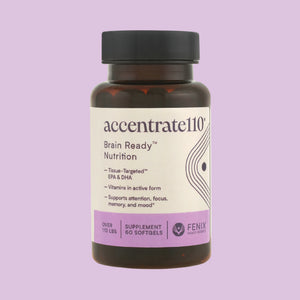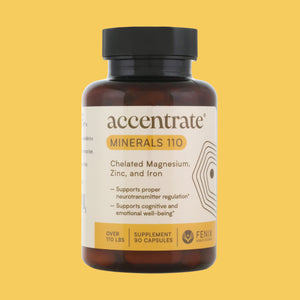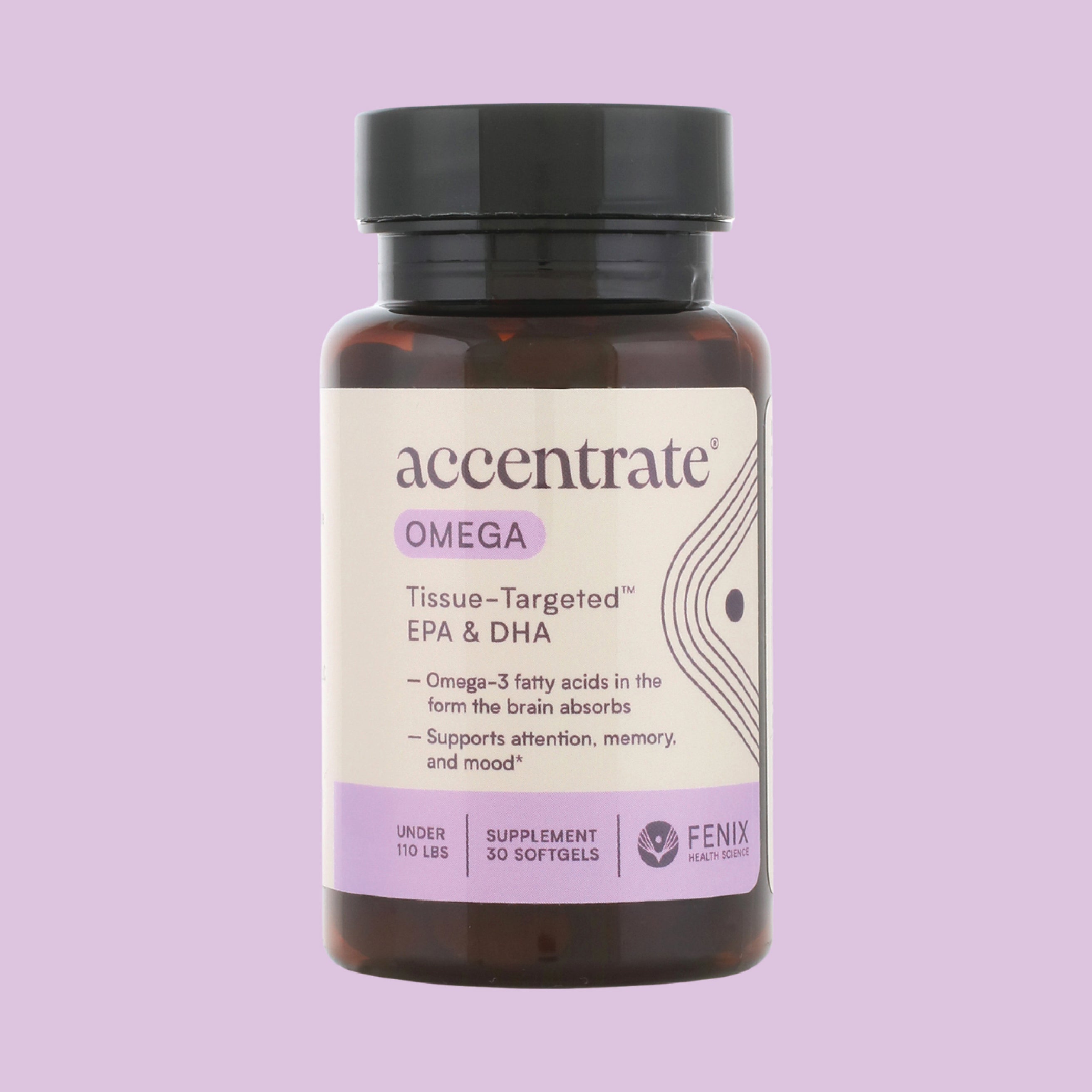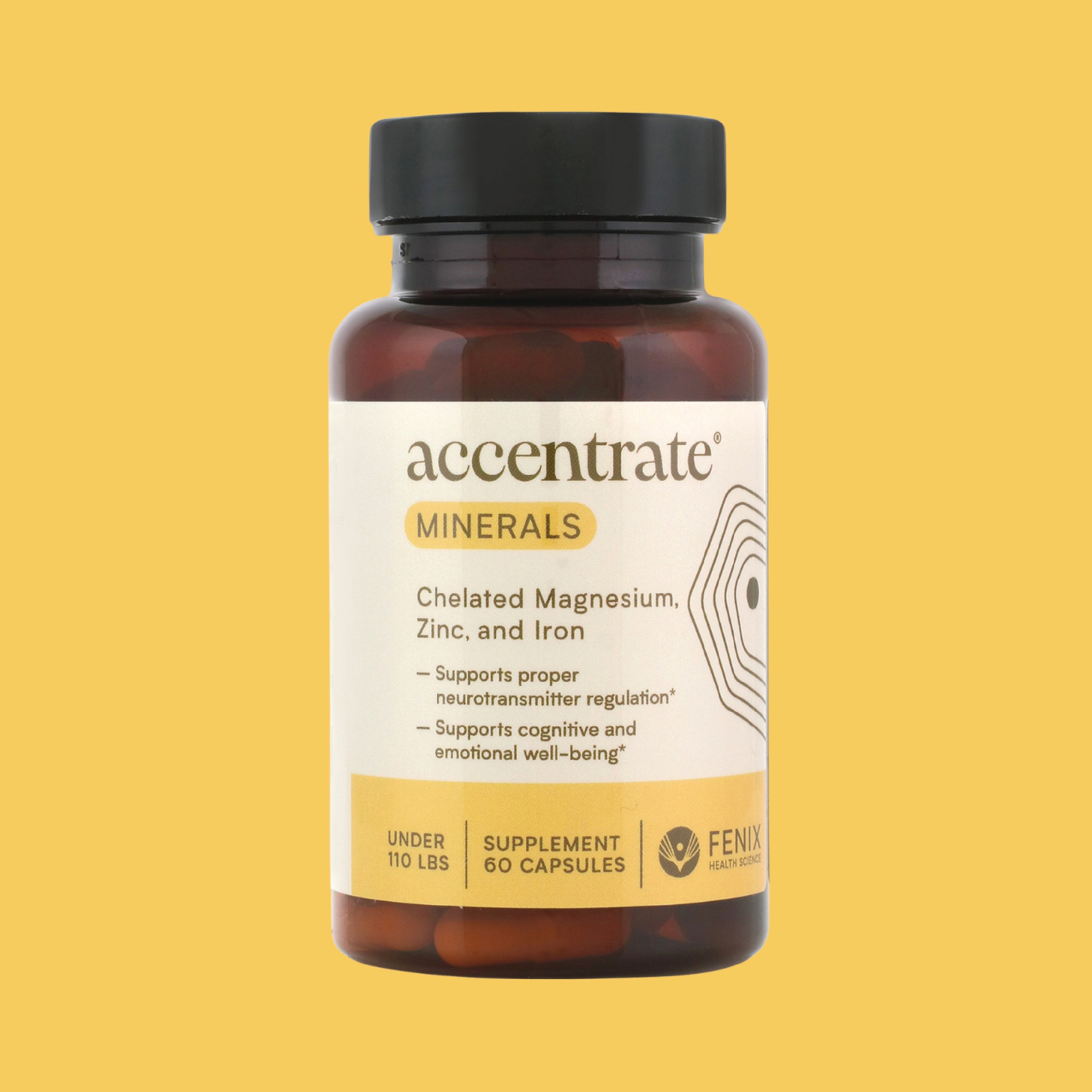-
- Antalis, C.J., et al., “Omega-3 Fatty Acid Status in Attention-Deficit/ Hyperactivity Disorder,” Prostaglandins Leukot Essent Fatty Acids, 2006. 75(4-5): p. 299-308.
- Belanger, et. al., “Omega-3 Fatty Acid Treatment of Children with Attention-Deficit Hyperactivity Disorder: A Randomized, Double-Blind, Placebo-Controlled Study,” Pediatric Child Health, 2009; 14(2): p. 89-98.
- Bloch, et. al., “Omega-3 Fatty Acid Supplementation for the Treatment of Children with Attention-Deficit/Hyperactivity Disorder Symptomology: Systematic Review and Meta-Analysis,” J Am Acad Child Adolesc Psychiatry, October 2011; 50(10) p. 991-1000.
- Bos, et. al., “Reduced Symptoms of Inattention after Dietary Omega-3 Fatty Acid Supplementation in Boys with and without Attention Deficit/Hyperactivity Disorder,” Neuropsychopharmacology, (2015) 40, p. 2298-2306.
- Burgess, J.R., et al., “Long-Chain Polyunsaturated Fatty Acids in Children with Attention-Deficit Hyperactivity Disorder,” Am J Clin Nutr, 2000. 71(1 Suppl): p. 327S-30S.
- Colter, A.L., et. al., “Fatty Acid Status and Behavioral Symptoms of Attention Deficit Hyperactivity Disorder in Adolescents: A Case-Control Study,” Nutr J, 2008. 7: p. 8.
- Firth, et al., “The efficacy and safety of nutrient supplements in the treatment of mental disorders: a meta‐review of meta‐analyses of randomized controlled trials,” World Psychiatry, 8:3, 2019, p 308-324.
- Gow, R.V., et al., “Omega-3 Fatty Acids Are Related to Abnormal Emotion Processing in Adolescent Boys with Attention Deficit Hyperactivity Disorder.” Prostaglandins Leukot Essent Fatty Acids, 2013. 88(6): p. 419-29.
- Gow, R.V., et al., “Omega-3 Fatty Acids Are Inversely Related To Callous And Unemotional Traits In Adolescent Boys With Attention Deficit Hyperactivity Disorder,” Prostaglandins Leukot Essent Fatty Acids, 2013. 88(6): p. 411-8.
- Gustafsson, et. al., “EPA Supplementation Improves Teacher-Rated Behavior and Oppositional Symptoms in Children with ADHD.” Acta Paediatr 2010; 99: 1540–1549.
- Hawkey and Nigg, “Omega-3 fatty acid and ADHD: Blood level analysis and meta-analytic extension of supplementation trials,” Clin Psychol Rev. 2014 August; 34(6): 496-505.
- Johnson, et. al., “Omega-3/Omega-6 Fatty Acids for Attention Deficit Disorder: A Randomized Placebo-Controlled Trial in Children and Adolescents,” Journal of Attention Disorders, 2008, p. 1-8.
- Konig, et al., “Critical Appraisal of Omega-3 Fatty Acids in Attention-Deficit/Hyperactivity Disorder Treatment,” Neuropsychiatric Disease and Treatment, 2016: 12, p. 1869-1882.
- Milte, et. al., “Eicosapentaenoic and Docosahexaenoic Acids, Cognition, and Behavior in Children with Attention Deficit/Hyperactivity Disorder: A Randomized Controlled Trial,” Nutrition, (2012) 28; p. 670-677.
- Ramprasath, et. al., “Enhanced Increase of Omega-3 Index in Healthy Individuals with Response to 4-Week n-3 Fatty Acid Supplementation from Krill Oil Versus Fish Oil,” Lipids in Health and Disease, 2013, 12: p. 178.
- Raz, et al., “Essential Fatty Acids and Attention-Deficit/Hyperactivity Disorder: A Systematic Review,” Developmental Medicine & Child Neurology, 2009, 51; p. 580-592.
- Raz, et. al., “The Influence of Short-Chain Essential Fatty Acids on Children with Attention Deficit/Hyperactivity Disorder: A Double-Blind Placebo-Controlled Study,” Journal of Child and Adolescent Psychopharmacology, Vol. 19, No. 2, 2009; p. 167-177.
- Richardson, et. al., “A Randomized Double-Blind, Placebo-Controlled Study of the Effects of Supplementation with Highly Unsaturated Fatty Acids on ADHD-Related Symptoms in Children with Specific Learning Difficulties,” Progress in Neuro-Psychopharmacology Biological Psychiatry, 26 (2002) p. 233-239.
- Richardson, et. al., “A Randomized Controlled Trial of Dietary Supplementation with Fatty Acids in Children with Developmental Coordination Disorder,” Pediatrics, 115(5): 1360-1366.
- Richardson, et. al., “Omega-3 Fatty Acids in ADHD and Related Neurodevelopmental Disorders,” International Review of Psychiatry, April 2006; 18 (2): p. 155-172.
- Schuchart, et al., “Significance of Long-Chain Polyunsaturated Fatty Acids (PUFAs) for the Development and Behavior of Children,” Eur J Pediatr, (2010) 169: p. 149-164.
- Stevens, L.J., et al., “Essential Fatty Acid Metabolism in Boys with Attention Deficit Hyperactivity Disorder,” Am J Clin Nutr, 1995. 62(4): p. 761-8.
- Sinn, et. al., “Cognitive effects of Polyunsaturated Fatty Acids in Children with Attention Deficit Hyperactivity Disorder Symptoms: A Randomized Trial,” Prostaglandins, Leukotrienes and Essential Fats, 78 (2008) p. 311-326.
- Sorgi, et. al., “Effects of an Open-Label Pilot Study with High-Dose EPA/DHA Concentrates on Plasma Phospholipids and Behavior in Children with Attention-Deficit/Hyperactivity Disorder,” Nutrition Journal, 2007; 6:16, p. 1-8.
- Young, et al., “Omega-3 Fatty Acids and Neuropsychiatric Disorders,” Reprod Nutr Dev, 2005. 45(1): p. 1-28.
- Young, et. al., “Blood Phospholipid Fatty Acid Analysis of Adults with And Without Attention Deficit/Hyperactivity Disorder.” Lipids, 2004. 39(2): p. 117-23.
- Zimmer, et. al., “Chronic n-3 Polyunsaturated Fatty Acid Diet-Deficiency Acts on Dopamine Metabolism in the Rat Frontal Cortex: A Microdialysis Study,” Neuroscience Letters, 240 (1998) p. 177-181.
-
- Blum, et. al., “Attention-deficit-hyperactivity Disorder and reward deficiency syndrome,” Neuropsychiatric Disease and Treatment, 2008:4(5) 893-917, p. 893-917.
- Kuznetsova, et al., “A Model for Modulation of Neuronal Synchronization by D4 Dopamine Receptor-Mediated Phospholipid Methylation,” J Comput Neurosci, (2008) 24: p. 314-329.
- Lakhan, et al. “Nutritional Therapies for Mental Disorders” Nutritional Journal, Jan. 2008; 7:2.
- Rucklidge, et al., “Nutrient Supplementation Approaches in the Treatment of ADHD,” Expert Rev Neurother, 2009; 9(4), p. 461-476.
- Shaheen, et al., “Nutritional Therapies for Mental Disorders,” Nutritional Journal, 2008, 7, 2: p. 1-8.
-
- Gordon, et al., “Clinically Significant Symptom Reduction in Children with Attention-Deficit/Hyperactivity Disorder Treated with Micronutrients: An Open-Label Reversal Design Study,” J Child Adolesc Psychopharmacol. 2015 Dec 1; 25(10): p. 783–798.
- Richardson, et. al., “A Randomized Double-Blind, Placebo-Controlled Study of the Effects of Supplementation with Highly Unsaturated Fatty Acids on ADHD-Related Symptoms in Children with Specific Learning Difficulties,” Progress in Neuro-Psychopharmacology Biological Psychiatry, 26 (2002) p. 233-239.
- Rucklidge, et. al., “Broad-Spectrum Micronutrient Treatment for Attention-Deficit/Hyperactivity Disorder: Rationale and Evidence to Date,”
- Rucklidge, et. al., “Vitamin-mineral Treatment of Attention Deficit Hyperactivity Disorder in Adults: Double Blind Randomized Placebo-Controlled Trial,” The British Journal of Psychiatry, (2014) 204, p. 306-315.
- Rucklidge, et. al., “Vitamin-mineral Treatment of ADHD in Adults: A 1-Year Naturalistic Follow-Up of a Randomized Controlled Trial,” Journal of Attention Disorders, 2014: p. 1-11.
- Rucklidge, et. al., “Moderators of Treatment Response in Adults with ADHD treated with a Vitamin-Mineral Supplement,” Progress in Neuro-Psychopharmacology & Biological Psychiatry, 50 (2014) p. 163-171.
- Rucklidge, et. al., “Effect of Micronutrients on Behavior and Mood in Adults with ADHD: Evidence From an 8 Week Open Label Trial with Natural Extension,” Journal of Attention Disorders, 15(1) 2011, p. 79-91.
- Rucklidge, et. al., “Vitamin-Mineral Treatment Improves Aggression and Emotional Regulation in Children with ADHD: A Fully Blinded, Randomized, Placebo-Controlled Trial,” Journal of Child Psychology and Psychiatry, 2017: p. 1-15.
- Sinn, et al. “Effect of Supplementation with Polyunsaturated Fatty Acids and Micronutrients on Learning and Behavior Problems Associated with Child ADHD,” Journal of Developmental and Behavioral Problems, Vol. 28, No. 2, Jan. 2007, p. 82-91.
-
- Gokcen, C. et al. “Methylenetetrahydrofolate Reductase Gene Polymorphisms in Children with Attention-Deficit/Hyperactivity Disorder,” International Journal of Medical Sciences, 2011; 8(7): p. 523-528.
- Panda, P., et al. "Efficacy of oral folinic acid supplementation in children with autism spectrum disorder: a randomized double-blind, placebo-controlled trial." European Journal of Pediatrics 183.11 (2024): 4827-4835.
- Saha, et al. “A Pilot Study on the Contribution of Folate Gene Variants in the Cognitive Function of ADHD Probands,” Neurochem Res, (2014) 39: p. 2058-2067.
- Shaw, et al., “A Possible Biological Mechanism for the B Vitamins Altering Behavior in Attention-Deficit/Hyperactivity Disorder,” Pharm Med, 2010; 24 (5): p. 289-294.
- Wong, C., et al. “Folinic acid as a treatment for autism in children: A within‐subjects open‐label study on safety and efficacy.” International Journal of Developmental Neuroscience 85.1 (2025).
-
- Desai, et. al., “The Metabolic Basis for Developmental Disorders Due to Defective Folate Transport,” Biochimie, (2016) Jul; 126: p. 31-42.
- Ganz, Ariel, ‘Genetic Impairments in Folate Enzymes Increase Dependence on Dietary Choline for Phosphatidylcholine Production at the Expense of Betaine Synthesis,” The FASEB Journal; February 2017, Vol. 30, No. 10, p. 3321-3333.
- Gokcen, et. al., “Methylenetetrahydrofolate Reductase Gene Polymorphisms in Children with Attention Deficit Disorder,” Int. J. Med. Sci., 2011;8 p. 523-528.
- Kamdar, et. al. “Folate Pathway Polymorphisms Predict Deficits in Attention and Processing Speeds After Childhood Leukemia Therapy,” Pediatr Blood Cancer, 2011; 57: p. 454-460.
- Kuznetsova, et. al. “A model for modulation of neuronal synchronization by D4 dopamine receptor-mediated phospholipid methylation,” J Comput Neurosci, (2008) 23: p. 314-329.
- Saha, et al. “A Pilot Study on the Contribution of Folate Gene Variants in the Cognitive Function of ADHD Probands,” Neurochem Res, (2014) 39: p. 2058-2067.
-
- Shaw, et al., “A Possible Biological Mechanism for the B Vitamins Altering Behavior in Attention-Deficit/Hyperactivity Disorder,” Pharm Med, 2010; 24 (5): p. 289-294.
-
- Goksugur, et al., “Vitamin D Status in Children with Attention-Deficit/Hyperactivity Disorder,” Pediatrics International, August 2014; 56(4): p. 515-19.
- Patrick, et. al., “Vitamin D and the Omega-3 Fatty Acids Control Serotonin Synthesis and Action, part 2: Relevance for ADHD, Bipolar Disorder, Schizophrenia, and Impulsive Behavior,” The FASEB Journal, February 2017, Vol. 29, No. 6, p: 2207-2222.
- Sharif, et al., “The Relationship Between Serum Vitamin D Level and Attention-Deficit/Hyperactivity Disorder,” Iranian Journal of Child Neurology, Fall 2015; 9(4): p. 48-53.
-
- Baza, et at., “Magnesium Supplementation in Children with Attention-Deficit/Hyperactivity Disorder,” The Egyptian Journal of Medical Human Genetics, (2016) 17, p. 63-70.
- Ghanizadeh, et al., “A systemic Review of Magnesium Therapy for Treating Attention Deficit Hyperactivity Disorder,” Archives of Iranian Medicine, July 2013, 16(7): p. 412-17.
- Kozielec, et al., “Assessment of Magnesium Levels in Children with Attention-Deficit/Hyperactivity Disorder (ADHD),” Magnesium Research, June 1997; 10(2): p. 143-148.
- Mousain-Bosc, et al., “Improvement of Neurobehavioral Disorders in Children Supplemented with Magnesium-Vitamin B6 in Attention Deficit Hyperactivity Disorders,” Magnesium Research, 2006; 19(1): p. 46-52.
- Slutsky, et al., “Enhancement of Learning Memory by Elevating Brain Magnesium,” Nueron, January 2010: 65, p. 165-177.
- Villagomez, et. al., “Iron, Magnesium, Vitamin D, and Zinc Deficiencies in Children Presenting with Symptoms of Attention-Deficit Hyperactivity Disorder,” Children, 2014, 1: 261-279.
-
- Liu, et. al., “Higher efficacy of dietary DHA provided as a phospholipid than as a triglyceride for brain DHA accretion in neonatal piglets,” Journal of Lipid Research, Vol. 55, 2014, p. 531-539.
- Lagarde et. al., “Lysophosphatidylcholine as a Preferred Carrier Form of Docosahexaenoic Acid to the Brain, Journal of Molecular Neuroscience, Vol. 16, Nov. 2001, p . 201-204.
- Ramprasath, et al., “Enhanced Increase of Omega-3 Index in Healthy Individuals with Response to 4-Week n-3 Fatty Acid Supplementation from Krill Oil versus Fish Oil,” Lipids in Health and Disease, 2013, 12: p. 178.
- Schuchardt, et al., “Incorporation of EPA and DHA into Plasma Phospholipids in Response to Different Omega-3 Fatty Acid Formulations – a Comparative Bioavailability Study of Fish Oil vs. Krill Oil,” Lipids in Health Disease, 2011; 10, 145: p. 1-7.
- Ulven, et al., “Metabolic Effects of Krill Oil are Essentially Similar to Those of Fish Oil but at Lower Dose of EPA and DHA,” Lipids, 2011; 46(1): p. 37-46.
- Vaisman, et. al., “Correlation Between Changes in Blood Fatty Acid Composition and Visual Sustained Attention Performance in Children with Inattention: Effect of Dietary n-3 Fatty Acids Containing Phospholipids,” Am J Clin Nutr, 2008; 87: p. 1170-80.
- Virmani, K., “Health Benefits of Phospholipids: The Effects of Phosphatidylcholine And Phosphatidylserine On Cognitive Function,” Human Nutrition Lucas Meyer GmbH and Co., 1999(4, Scand. Suppl): p. 17-19.
-
- Akhondzadeh, et al., “Zinc sulfate as an adjunct to methylphenidate for the treatment of attention deficit hyperactivity disorder in children: A double blind and randomized trial,” BMC Psychiatry, 2004, 4:9.
- Arnold, et al., “Does Hair Zinc Predict Amphetamine Improvement of Add/Hyperactivity?,” International Journal of Neuroscience, 1990: 50:1-2, p. 103-107.
- Bekarglu, et al., “Relation between serum free fatty acids and zinc, and attention deficit hyperactivity disorder: a research note.” J Child Psychol Psychiat, 1996, 37: 225-227.
- Toren, et al. “Zinc deficiency in attention-deficit hyperactivity disorder,” Biological Psychiatry, Vol. 40, Issue 12, 1308 – 1310.
- Uçkardeş et al., “Effects of zinc supplementation on parent and teacher behaviour rating scores in low socioeconomic level Turkish primary school children,” Acta Paediatr. 2009 Apr; 98 (4): p. 731-6.
- Villagomez, et. al., “Iron, Magnesium, Vitamin D, and Zinc Deficiencies in Children Presenting with Symptoms of Attention-Deficit Hyperactivity Disorder,” Children, 2014, 1: 261-279.
-
- Biederman J, Faraone SV. Attention-deficit hyperactivity disorder. Lancet 366(9481), 237–248 (2005).
- Konofal, et al, “Iron deficiency in children with attention-deficit/hyperactivity disorder,” Arch Pediatr Adolesc Med, 2004; 158: 1113-5.
- Lozoff B, Beard J, Connor J, Barbara F, Georgieff M, Schallert T. Long-lasting neural and behavioral effects of iron deficiency in infancy. Nutr. Rev. 64, S34–S43 (2006).
- Youdim MB, Yehuda S. The neurochemical basis of cognitive deficits induced by brain iron deficiency: involvement of dopamine–opiate system. Cell. Mol. Biol. (Noisy-le-Grand) 46(3), 491–500 (2000).
- Villagomez, et. al., “Iron, Magnesium, Vitamin D, and Zinc Deficiencies in Children Presenting with Symptoms of Attention-Deficit Hyperactivity Disorder,” Children, 2014, 1: 261-279.
-
- Bienenstock, J., et al. “Microbiota and the gut–brain axis.” Nutrition reviews, 73.suppl_1 (2015): 28-31.
- Cenit, et al. “Gut microbiota and attention deficit hyperactivity disorder: new perspectives for a challenging condition.” Eur Child Adolesc Psychiatry, 26.9 (2017): 1081-1092.
- Chen, H, et alCheng, L, et al. “Lactobacillus paracasei PS23 dietary supplementation alleviates muscle aging via ghrelin stimulation in d-galactose-induced aging mice.” Journal of Functional Foods, 85 (2021): 104651.. “Psychophysiological effects of lactobacillus plantarum ps128 in patients with major depressive disorder: A preliminary 8-week open trial.” Nutrients, 13.11 (2021): 3731.
- Chen, L, et al. “Lacticaseibacillus paracasei PS23 effectively modulates gut microbiota composition and improves gastrointestinal function in aged SAMP8 mice.” Nutrients, 13.4 (2021): 1116.
- Chen, L, et al. “Lactobacillus paracasei PS23 decelerated age-related muscle loss by ensuring mitochondrial function in SAMP8 mice.” Aging, 11.2 (2019): 756.
- Cheng, LH, et al. “Psychobiotics in mental health, neurodegenerative and neurodevelopmental disorders.” Journal of food and drug analysis, 27.3 (2019): 632-648.
- Clapp, M, et al. “Gut microbiota’s effect on mental health: The gut-brain axis.” Clinics and practice, 7.4 (2017): 987.
- Desbonnet, L, et al. “Effects of the probiotic Bifidobacterium infantis in the maternal separation model of depression.” Neuroscience, 170.4 (2010): 1179-1188.
- Dolan, Keren E., et al. “Probiotics and disease: a comprehensive summary—part 1, mental and neurological health.” Integrative Medicine: A Clinician's Journal 15.5 (2016): 46.
- El Hage, R, et al. "Emerging trends in “smart probiotics”: functional consideration for the development of novel health and industrial applications.” Frontiers in microbiology, 8 (2017): 1889.
- Foster, L., et al. “A comprehensive post-market review of studies on a probiotic product containing Lactobacillus helveticus R0052 and Lactobacillus rhamnosus R0011.” Beneficial microbes, 2.4 (2011): 319-334.
- Garcia-Gutierrez, E et al. “Autism spectrum disorder associated with gut microbiota at immune, metabolomic, and neuroactive level.” Frontiers in Neuroscience, 14 (2020): 578666.
- Heidarzadeh-Rad, N, et al. “Effects of a Psychobiotic Supplement on Serum Brain-derived Neurotrophic Factor Levels in Depressive Patients: A Post Hoc Analysis of a Randomized Clinical Trial.” J Neurogastroenterol. Motil., Vol. 26,4 (2020): 486-495.
- Heldt, S. A., et al. “Hippocampus-specific deletion of BDNF in adult mice impairs spatial memory and extinction of aversive memories.” Molecular psychiatry, 12.7 (2007): 656-670.
- Ho, Y, et al. “Effects of Lactobacillus plantarum ps128 on depressive symptoms and sleep quality in self-reported insomniacs: A randomized, double-blind, placebo-controlled pilot trial.” Nutrients 13.8 (2021): 2820.
- Huang, S. et al. “Lactobacillus paracasei PS23 delays progression of age-related cognitive decline in senescence accelerated mouse prone 8 (SAMP8) mice.” Nutrients, 10.7 (2018): 894.
- Khangwal, I, et al. “Potential prebiotics and their transmission mechanisms: Recent approaches.” Journal of Food and Drug analysis, 27.3 (2019): 649-656.
- Kong, X. et al. “Probiotic and Oxytocin Combination Therapy in Patients with Autism Spectrum Disorder: A Randomized, Double-Blinded, Placebo-Controlled Pilot Trial.” Nutrients, (2021) Vol. 13,5 1552.
- Liang, S. et al. “Gut-Brain Psychology: Rethinking Psychology from the Microbiota–Gut–Brain Axis.” Front. Integr. Neurosci., (2018) 12:33.
- Lin, A, et al. “Hypnotic effects of Lactobacillus fermentum PS150TM on pentobarbital-induced sleep in mice.” NutrientsI, 11.10 (2019): 2409.
- Lin, A, et al. “Lactobacillus fermentum PS150 promotes non-rapid eye movement sleep in the first night effect of mice.” Scientific Reports, 11.1 (2021): 1-15.
- Liu, WH, et al. “Alteration of behavior and monoamine levels attributable to Lactobacillus plantarum PS128 in germ-free mice.” Behavioural Brain Research, 298 (2016): 202-209.
- Liu, WH, et al. “Genome architecture of Lactobacillus plantarum PS128, a probiotic strain with potential immunomodulatory activity.” Gut pathogens, 7.1 (2015): 1-7.
- Liu, YW, et al. “Effects of Lactobacillus plantarum PS128 on children with autism spectrum disorder in Taiwan: a randomized, double-blind, placebo-controlled trial.” Nutrients, 11.4 (2019): 820.
- Liu, YW, et al. “Oral administration of heat-inactivated Lactobacillus plantarum K37 modulated airway hyperresponsiveness in ovalbumin-sensitized BALB/c mice.” PloS one, 9.6 (2014): e100105.
- Lu, Y, et al. “BDNF: a key regulator for protein synthesis-dependent LTP and long-term memory?.” Neurobiology of learning and memory 89.3 (2008): 312-323.
- Ma, Y, et al. “Lactobacillus acidophilus exerts neuroprotective effects in mice with traumatic brain injury.” The Journal of Nutrition 149.9 (2019): 1543-1552.
- Martinowich, K., et al. “Interaction between BDNF and Serotonin: Role in Mood Disorders.” Neuropsychopharmacol 33, 73–83 (2008).
- Mensi, et al. “Lactobacillus plantarum PS128 and other probiotics in children and adolescents with autism spectrum disorder: a real-world experience.” Nutrients 13.6 (2021): 2036.
- Messaoudi, M, et al. “Assessment of psychotropic-like properties of a probiotic formulation (Lactobacillus helveticus R0052 and Bifidobacterium longum R0175) in rats and human subjects.” British Journal of Nutrition 105.5 (2011): 755-764.
- Messaoudi, M, et al. “Beneficial psychological effects of a probiotic formulation (Lactobacillus helveticus R0052 and Bifidobacterium longum R0175) in healthy human volunteers.” Gut microbes, 2.4 (2011): 256-261.
- Pärtty, A., et al. “A possible link between early probiotic intervention and the risk of neuropsychiatric disorders later in childhood: a randomized trial.” Pediatr Res, 77, 823–828 (2015).
- Rao, AV, et al. “A randomized, double-blind, placebo-controlled pilot study of a probiotic in emotional symptoms of chronic fatigue syndrome.” Gut pathogens, 1.1 (2009): 1-6.
- Ristori, MV, et al. “Autism, gastrointestinal symptoms and modulation of gut microbiota by nutritional interventions.” Nutrients, 11.11 (2019): 2812.
- Romijn, AR., et al. “A double-blind, randomized, placebo-controlled trial of Lactobacillus helveticus and Bifidobacterium longum for the symptoms of depression.” Australian & New Zealand Journal of Psychiatry, 51.8 (2017): 810-821.
- Santocchi, E, et al. “Effects of probiotic supplementation on gastrointestinal, sensory and core symptoms in autism spectrum disorders: a randomized controlled trial.” Frontiers in Psychiatry, 11 (2020): 550593.
- Sarkar, A, et al. “Psychobiotics and the manipulation of bacteria–gut–brain signals.” Trends in Neurosciences, 39.11 (2016): 763-781.
- Sarkar, A, et al. “The role of the microbiome in the neurobiology of social behaviour.” Biological Reviews, 95.5 (2020): 1131-1166.
- Sarkar, A. et al. “Psychobiotics and the manipulation of bacteria–gut–brain signals.” Trends Neurosci, 39.11 (2016): 763-781.
- Savignac, H., et al. “Bifidobacteria modulate cognitive processes in an anxious mouse strain.” Behav. Brain Res., 287 (2015): 59-72.
- Sharon, G, et al. “Human gut microbiota from autism spectrum disorder promote behavioral symptoms in mice.” Cell, 177.6 (2019): 1600-1618.
- Stavropoulou, E, et al. “Probiotics in medicine: a long debate.” Frontiers in Immunology, 11 (2020): 2192.
- Umbrello, G, et al. “Microbiota and neurologic diseases: potential effects of probiotics.” Journal of Translational Medicine, 14.1 (2016): 1-11.
- Wallace, CJK, et al. “The efficacy, safety, and tolerability of probiotics on depression: clinical results from an open-label pilot study.” Frontiers in psychiatry, 12 (2021): 618279.
- Walter, J. “Ecological role of lactobacilli in the gastrointestinal tract: implications for fundamental and biomedical research.” Applied and environmental microbiology, 74.16 (2008): 4985-4996.
- Wang, F, et al. “Long-term combined administration of Bifidobacterium bifidum TMC3115 and Lactobacillus plantarum 45 alleviates spatial memory impairment and gut dysbiosis in APP/PS1 mice.” FEMS Microbiology Letters, 367.7 (2020): fnaa048.
- Wang, H, et al. “Bifidobacterium longum 1714™ strain modulates brain activity of healthy volunteers during social stress.” The American journal of gastroenterology, 114.7 (2019): 1152.
- Wang, H, et al. “Effect of probiotics on central nervous system functions in animals and humans: a systematic review.” Journal of Neurogastroenterology and Motility, 22.4 (2016): 589.
- Wang, Y, et al. “The role of microbiome in central nervous system disorders.” Brain, behavior, and immunity, 38 (2014): 1-12.
- Wu, C, et al. “Randomized Controlled Trial of Probiotic PS128 in Children with Tourette Syndrome.” Nutrients, 13.11 (2021): 3698.
- Wu, CC, et al. “Effect of Lactobacillus plantarum strain K21 on high-fat diet-fed obese mice.” Evidence-based complementary and alternative medicine, 2015 (2015).
- Wu, CC, et al. “Randomized Controlled Trial of Probiotic PS128 in Children with Tourette Syndrome.” Nutrients, 13.11 (2021): 3698.
- Wu, SI., et al. “Psychobiotic supplementation of PS128TM improves stress, anxiety, and insomnia in highly stressed information technology specialists: a pilot study.” Frontiers in Nutrition, 8 (2021): 614105.
- Yarandi, SS., et al. “Modulatory effects of gut microbiota on the central nervous system: how gut could play a role in neuropsychiatric health and diseases.” Journal of Neurogastroenterology and Motility, 22.2 (2016): 201.
-
- Gokcen, C. et al. “Methylenetetrahydrofolate Reductase Gene Polymorphisms in Children with Attention-Deficit/Hyperactivity Disorder,” International Journal of Medical Sciences, 2011; 8(7): p. 523-528.
- Kamdar, et al., “Folate Pathway Polymorphisms Predict Deficits in Attention and Processing Speed After Childhood Leukemia Therapy,” Pediatr Blood Cancer, 2011; 57: p. 454-460.
- Krull KR, et al. “Folate Pathway Genetic Polymorphisms are Related to Attention Disorders in Child-hood Leukemia Survivors,” J Pediatr. 2008 Jan; 152(1): p. 101-5.
- Spellicy, et al., “Folate Metabolism Gene 5,10-Methylenetetrahydrofolate Reductase (MTHFR) Is Associated with ADHD in Myelomeningocele Patients,” PLOS One, Dec. 2012, Vol. 7, Issue 12.
Vitamin gummy for kids under 110 lbs.
Vitamin gummy for kids under 110 lbs.
LYSOVETA® LPC omega-3 for kids under 110 lbs.
LYSOVETA® LPC omega-3 for kids under ...
Chelated magnesium, zinc, and iron for those under 110 lbs.
Chelated magnesium, zinc, and iron fo...








